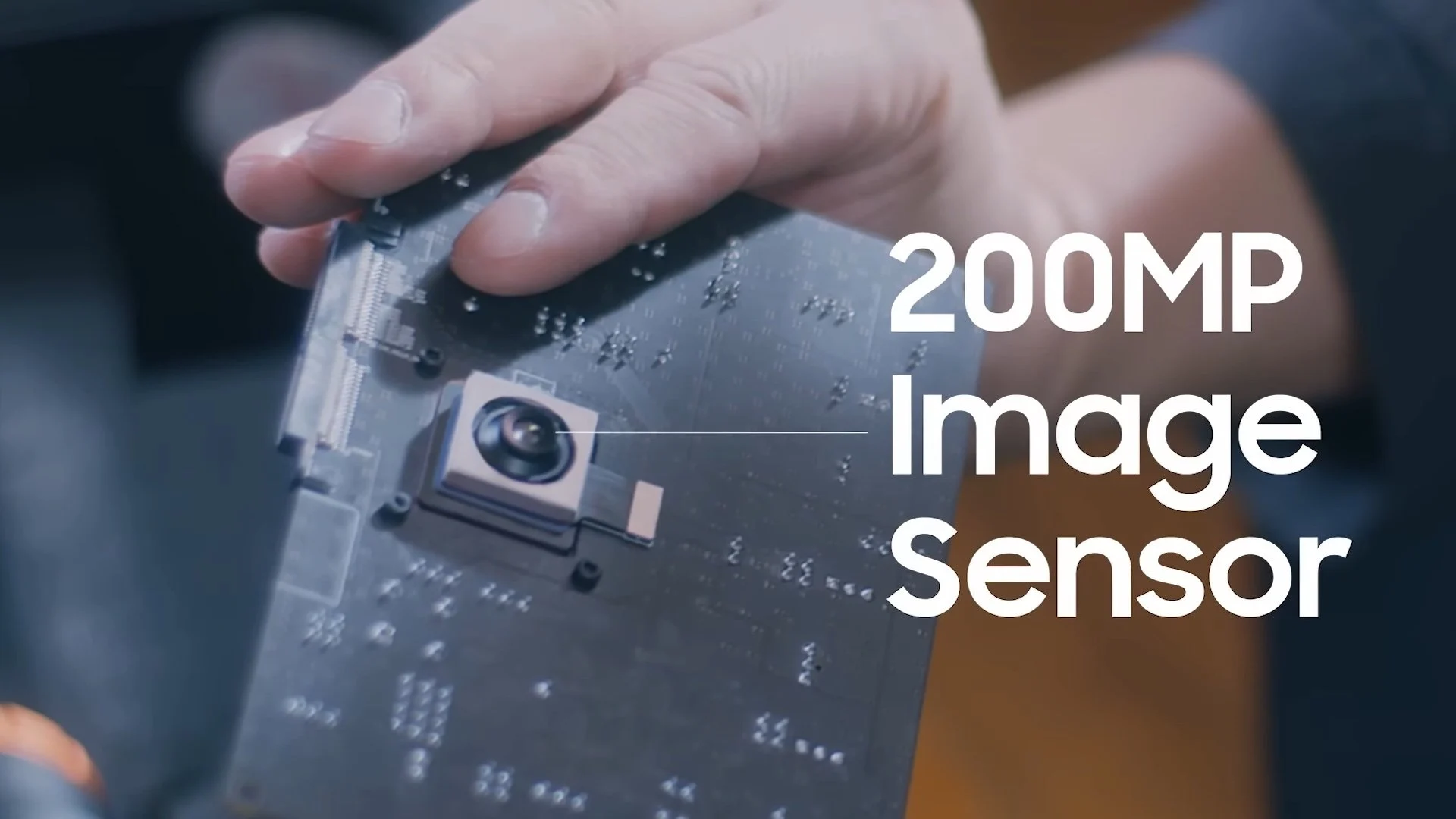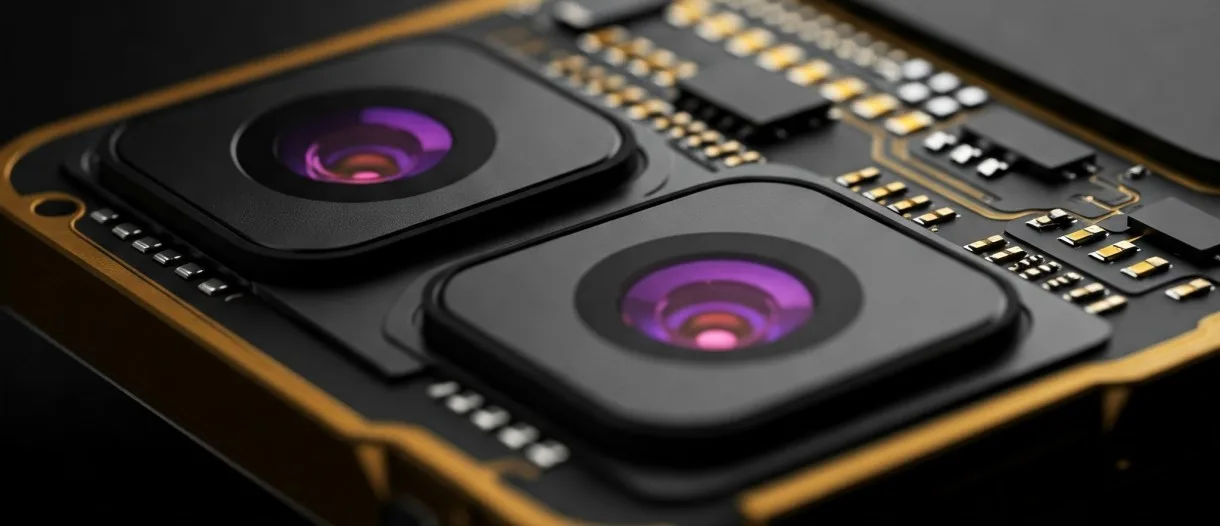The Sony 200MP camera sensor is finally here — and it’s gearing up to take on Samsung’s long-standing dominance in ultra-high-resolution smartphone imaging. Sony, known for its outstanding IMX series sensors, is preparing to launch its first 200-megapixel camera sensor, called LYT-910. This massive leap puts Sony head-to-head with Samsung’s ISOCELL HP lineup, signaling the beginning of a new megapixel war in mobile photography.

Sony LYT-910: The Company’s First 200MP Camera Sensor
According to trusted leakster @Fenibook, Sony’s first 200MP sensor is named LYT-910. It features a 1/1.11-inch sensor with 0.7-micron pixels — making it one of the largest and most detailed smartphone sensors yet.
The Sony 200MP camera sensor can output both 200MP and 50MP images using advanced pixel-binning technology. It reportedly supports dual-level Remosaic processing (QBC and QQBC) for faster, more efficient image readout. This means better performance in both high-resolution and low-light conditions.
Key Specifications of the Sony 200MP Camera Sensor
Sensor Size: 1/1.11-inch
Pixel Size: 0.7 µm
Dynamic Range: Over 100 dB, promising superior HDR
Zoom: 2× and 4× lossless in-sensor crop
Video Recording: 4K @ 120 fps and 8K @ 30 fps with HDR
Image Modes: 200MP full-resolution and 50MP binned outputs
This large sensor size gives Sony a significant edge in light capture and detail retention, especially in challenging lighting conditions — whether neon-lit night scenes or bright daylight landscapes.
Sony 200MP Camera Sensor vs Samsung ISOCELL: The Ultimate Showdown
Samsung has long dominated this space with its ISOCELL HP series, including the ISOCELL HP1 (1/1.22-inch) and ISOCELL HP2 (1/1.3-inch) sensors, both widely used in devices like the Galaxy S23 Ultra and S25 Ultra.
However, the Sony 200MP camera sensor is slightly larger, offering better light-gathering capability and a higher dynamic range. Its 0.7 µm pixel size outperforms the 0.6 µm of Samsung’s HP2, potentially delivering cleaner details and richer tones.
While Samsung focuses on speed and consistency, Sony appears to emphasize HDR performance, lossless zoom, and image realism — areas where Sony’s imaging heritage may give it the upper hand.

Flagships Expected to Feature the Sony 200MP Camera Sensor
Reports indicate that major Android OEMs — OPPO, Vivo, and Xiaomi — are preparing to use the Sony LYT-910 200MP camera sensor in their 2026 flagship smartphones.
Two models already tipped to debut with it are:
OPPO Find X9 Ultra
Vivo X300 Ultra
Sony’s own Xperia flagship lineup may also adopt the sensor later, though the company has not officially confirmed this. Samsung, on the other hand, is expected to continue using its in-house ISOCELL HP2 (200MP) in the upcoming Galaxy S26 Ultra.
Why the Sony 200MP Camera Sensor Matters
For years, Samsung’s ISOCELL series has dominated the 200MP market — but Sony’s LYT-910 changes the landscape. Its introduction signifies not just a megapixel race but also a shift toward higher image quality, dynamic range, and computational efficiency.
The Sony 200MP camera sensor focuses on refining how pixels perform rather than simply increasing their count. By integrating efficient remosaic algorithms, better HDR, and lossless zoom, Sony aims to set a new benchmark in mobile imaging.
More competition means faster innovation — and that’s a win for consumers who crave DSLR-like performance in smartphones.
Verdict
Sony’s entry into the 200-megapixel club with the Sony 200MP camera sensor LYT-910 is a bold and promising move. The sensor’s near-1-inch size, impressive HDR capability, and cutting-edge zoom technology show Sony’s intent to reclaim its leadership in smartphone photography.
If early leaks prove accurate, 2026 could mark the beginning of a new imaging rivalry — one where Sony and Samsung push each other to deliver the best possible mobile camera experience. For users, it’s simple: expect brighter, sharper, and smarter smartphone photography than ever before.
Read More-
M5 MacBook Pro review: exceptional performance leap or minor upgrade?
M5 iPad Pro review: hands-on testing and M4 upgrade check
ChatGPT Go free in India — OpenAI’s biggest expansion for Indian users in 2025
Redmi K90 Pro Max Launched: The Ultimate Value Flagship of 2025?
iPhone 17 Review: Smarter, Sleeker, Stronger
iPhone 17 Pro Max – The Most Powerful iPhone Yet
Best 5 Camera Phones in India for Stunning Photos (2025) – Full Reviews
FAQs About the Sony 200MP Camera Sensor
1. What is the Sony 200MP sensor called?
Sony’s first 200MP sensor is named LYT-910, designed to compete directly with Samsung’s ISOCELL HP series.
2. What are the key specs of the Sony 200MP sensor?
The Sony 200MP sensor features a 1/1.11-inch size, 0.7 µm pixels, dual remosaic processing, 4K 120 fps and 8K 30 fps video, and HDR over 100 dB.
3. Which phones will use the Sony 200MP sensor first?
OPPO Find X9 Ultra and Vivo X300 Ultra are expected to launch with the Sony 200MP sensor LYT-910 in 2026.
4. How does the Sony 200MP sensor compare to Samsung’s ISOCELL?
The Sony 200MP sensor offers a larger sensor size, higher HDR range, and superior lossless zoom compared to Samsung’s ISOCELL HP2.
5. When will the Sony 200MP sensor launch globally?
The Sony 200MP sensor LYT-910 is expected to debut officially in early 2026, with availability expanding through partner flagship phones.



